Apologies for letting you wait so long for another blog. We have been very busy shooting in my most favorite season of the year and the north of Spain showed us so many interesting places, little or no time was left to edit and write. A more personal blog will follow this one where we explain a bit how our daily looks like nowadays.
For now I like to show you a series of images I took at Playa Gueirua.
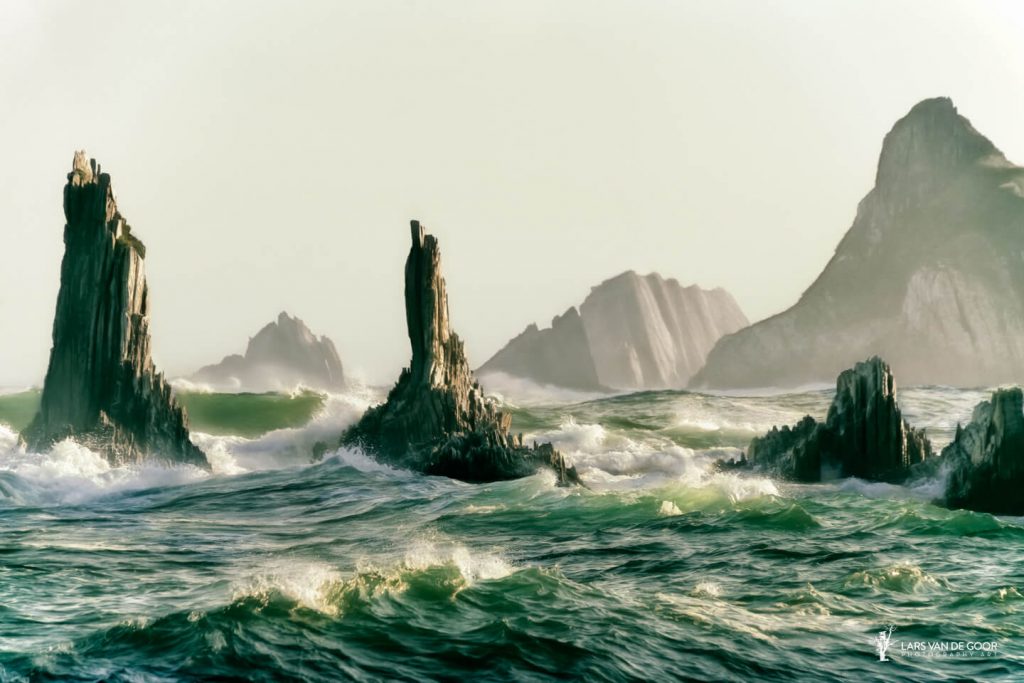
One of the most interesting parts we visited is Playa Gueirua. Situated near the small village Santa Marina, In Asturias.
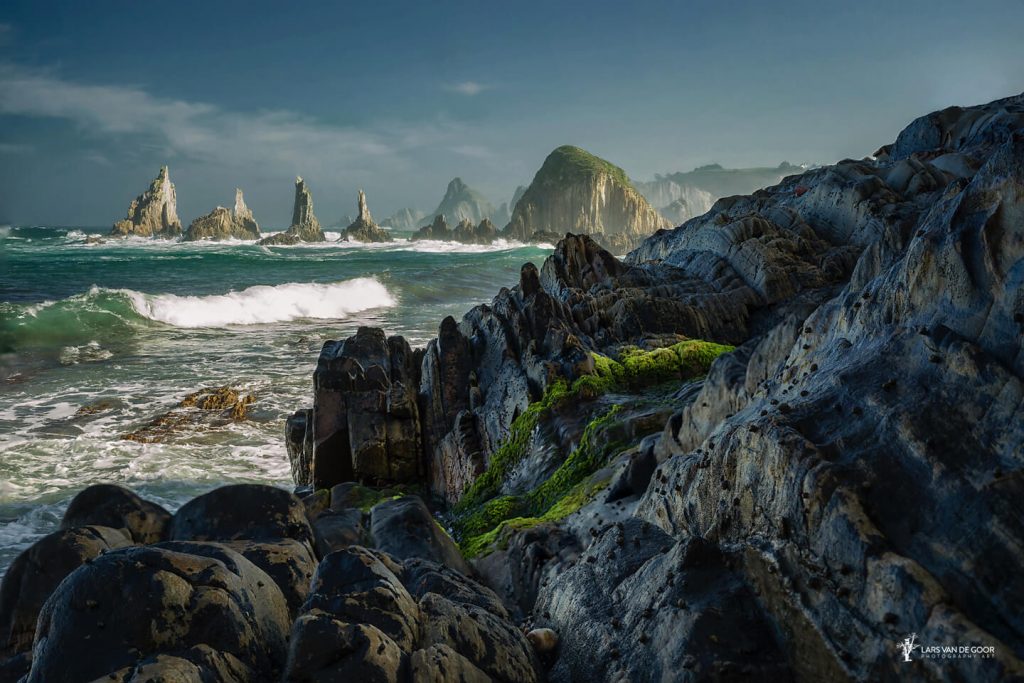
Our goal this journey is to find magical places and this is one of them. An astonishing beach and most interesting at low tide. I am not a seascape photographer and many local photographers have captured this place far more beautiful and in better light conditions. However, I enjoyed shooting there on several days and every time the sea and light was different…of course. This beach filled us with energy and we were fully charged at the end of the day 🙂
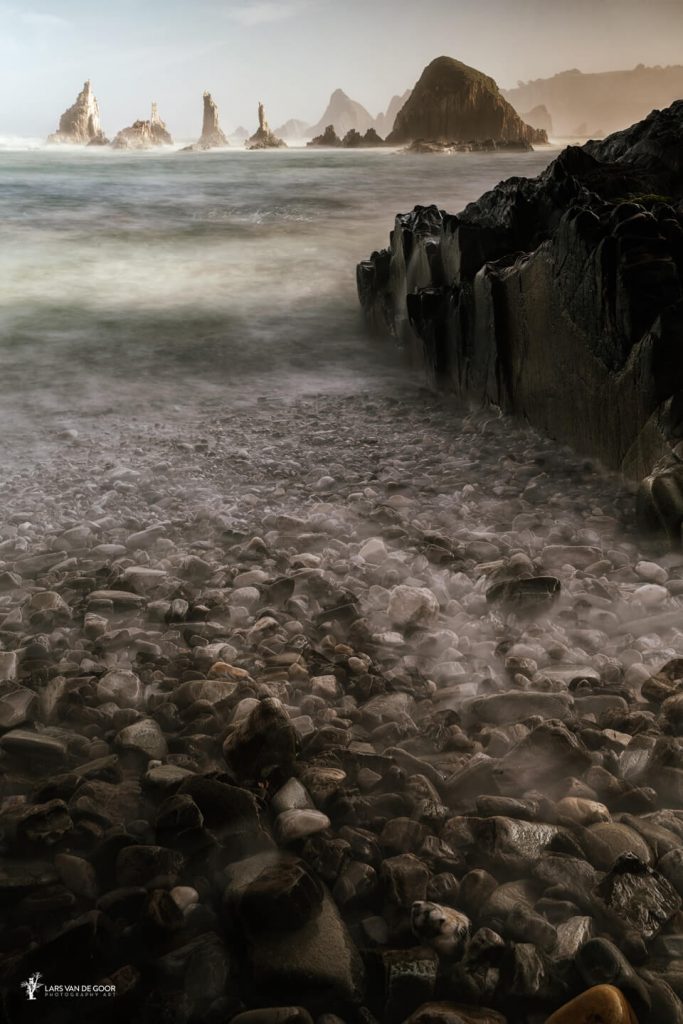
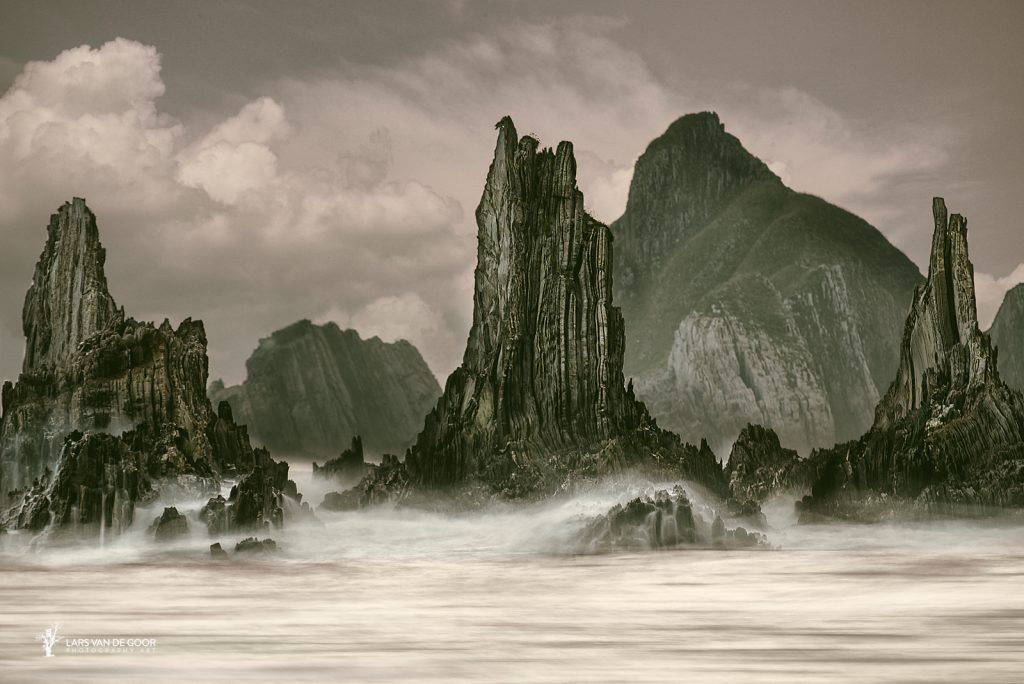
The interestingly shaped rocks is called Flysch. It’s is a sedimentary rock formed by the alternate deposition of thin layers of silt and sandstone, found near shorelines that were rapidly experiencing changes in sea level. They are formed underwater along the continental shelf when the area undergoes large structural deformation due to interaction of tectonic plates. As the continental plate gets shoved and heaved, landslides deposit layers of sediments. Due to the different sedimentation speed of grains with different size, a gradation takes place. Bigger particles sink faster and build up the ground layer and are overlain by finer grains. These landslides occur in irregular intervals resulting in the formation of layers upon layers of grains with thickness ranging from a few centimeters to several meters in some cases. At some point, structural deformation caused by colliding tectonic plates tilts the sedimentary beds to near vertical. Over time, the less resistant layers weather out more quickly creating long parallel grooves in the rock.
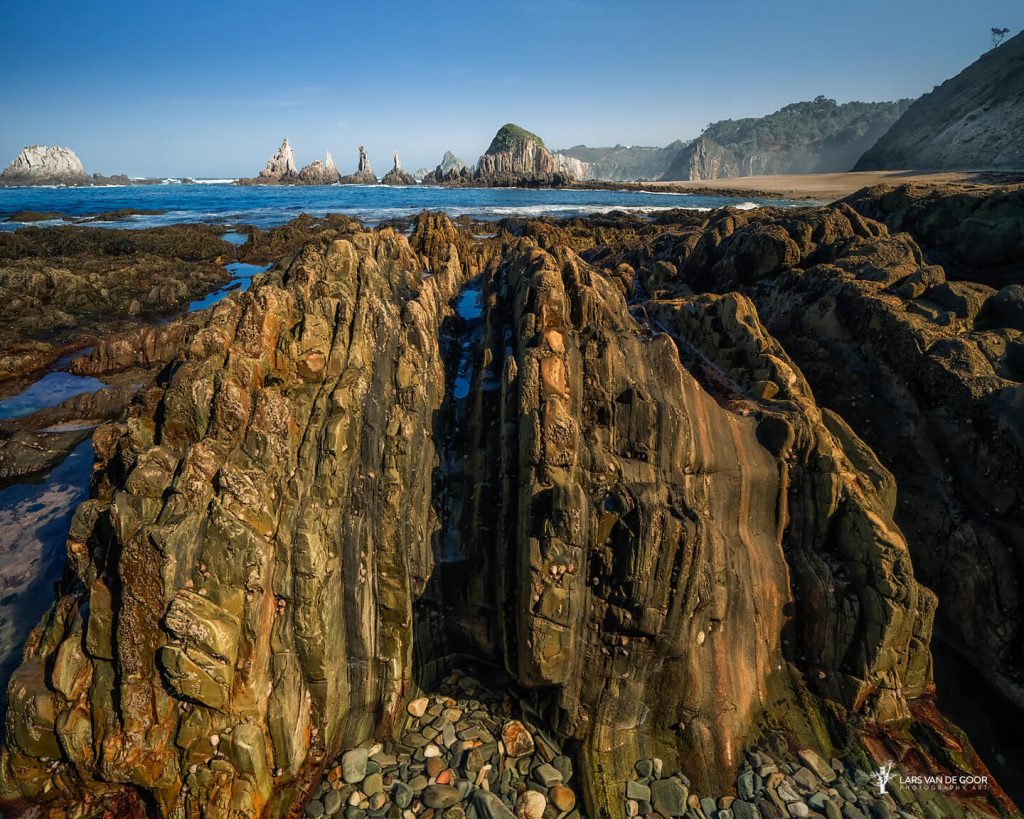
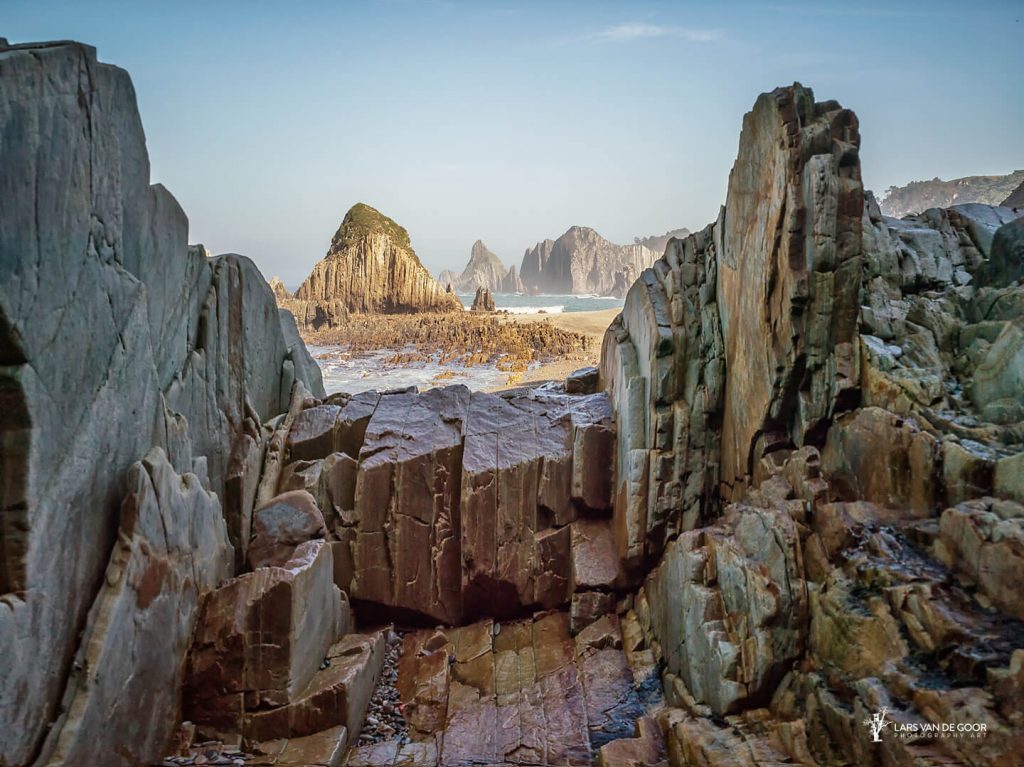

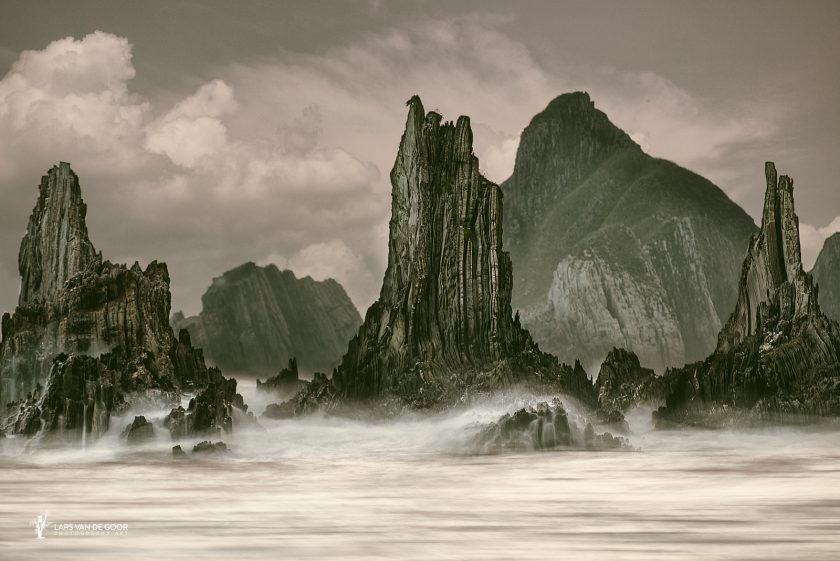
There are no comments